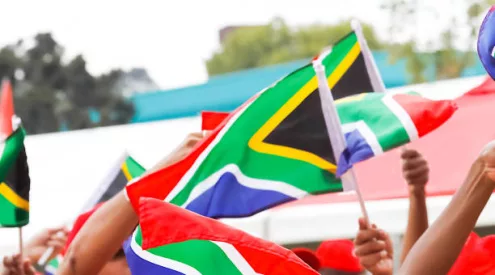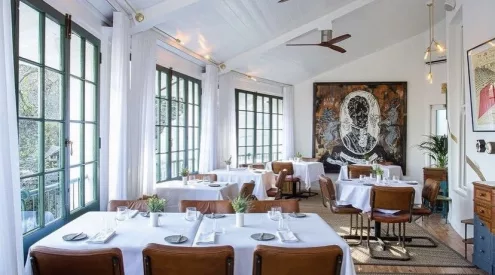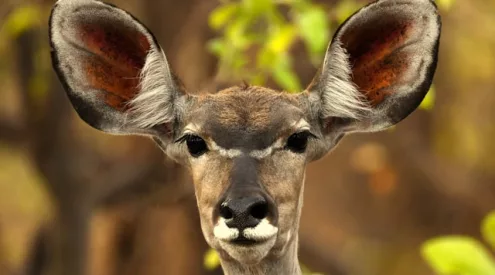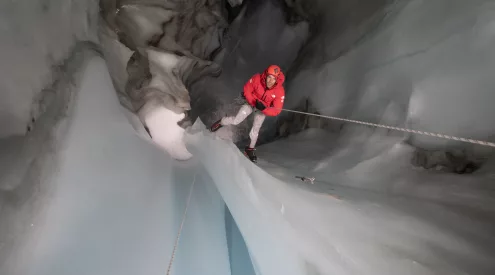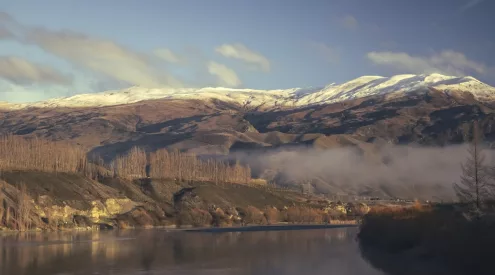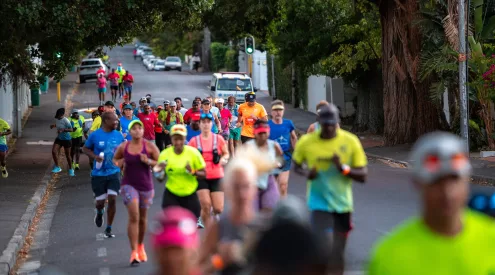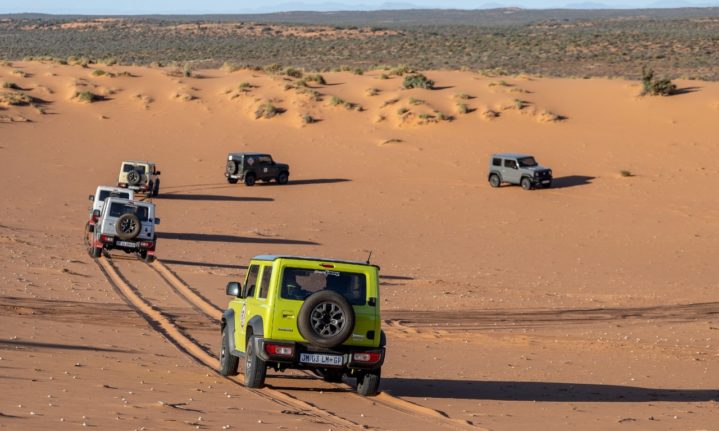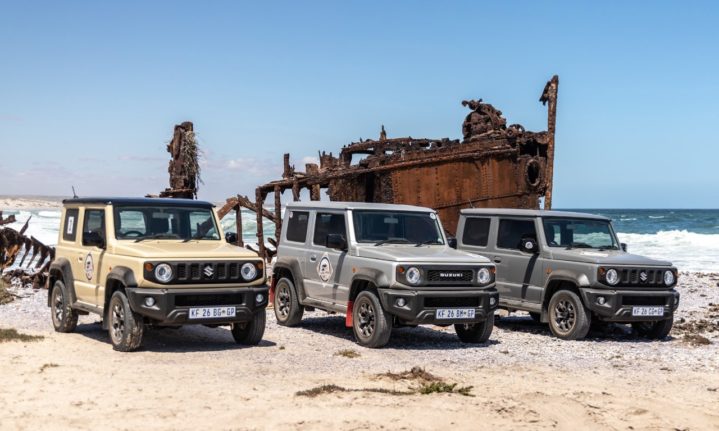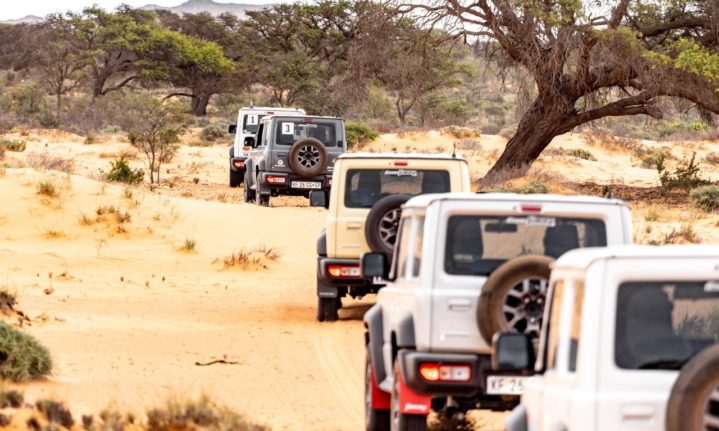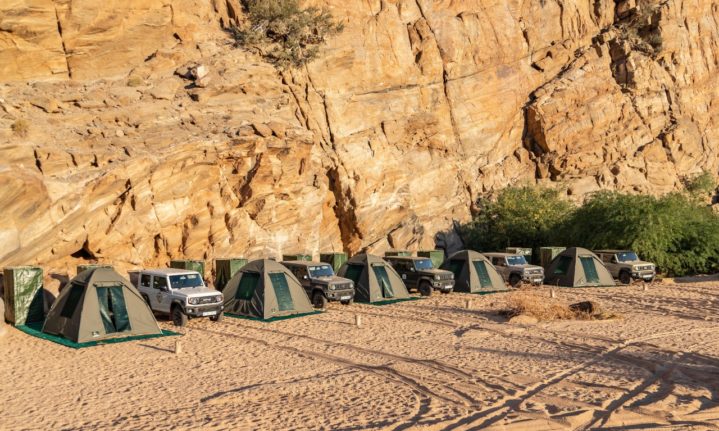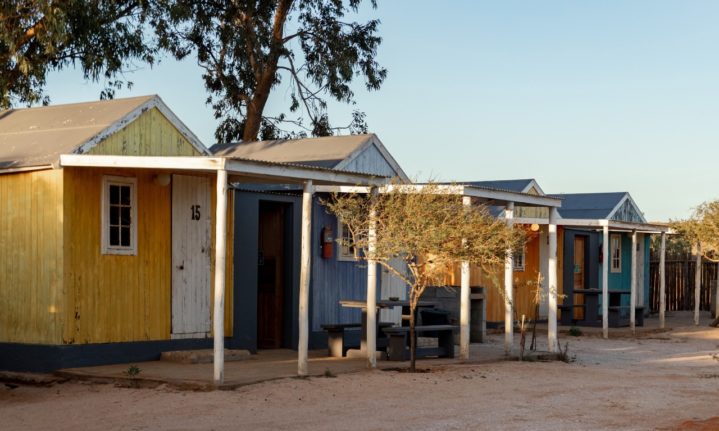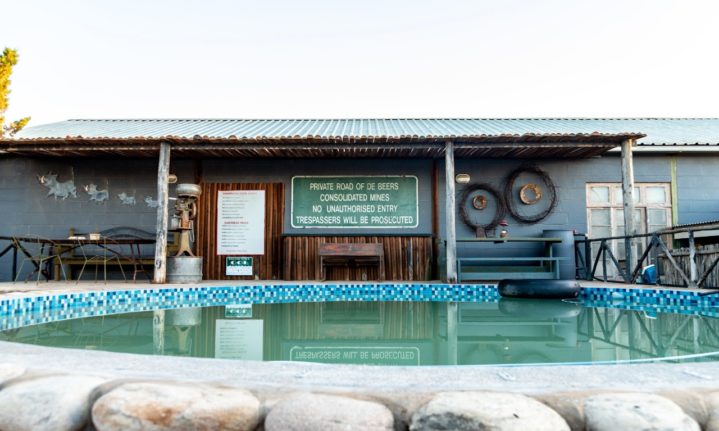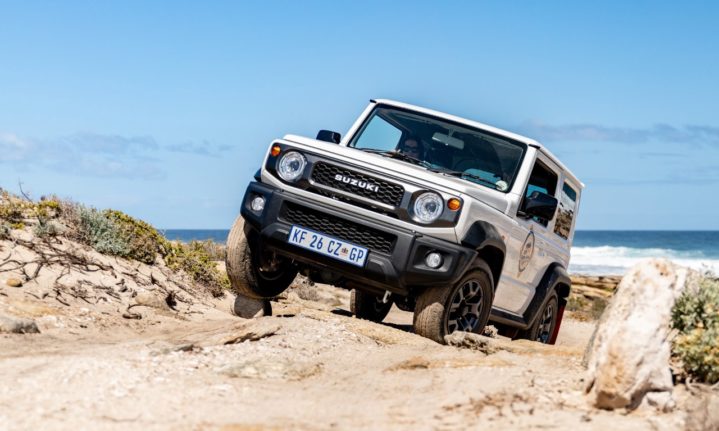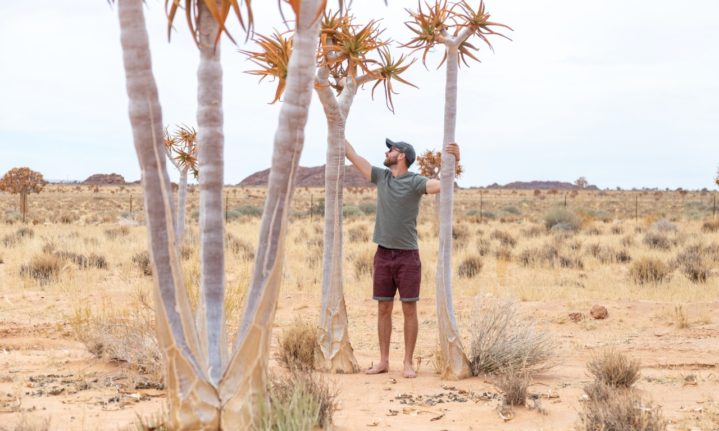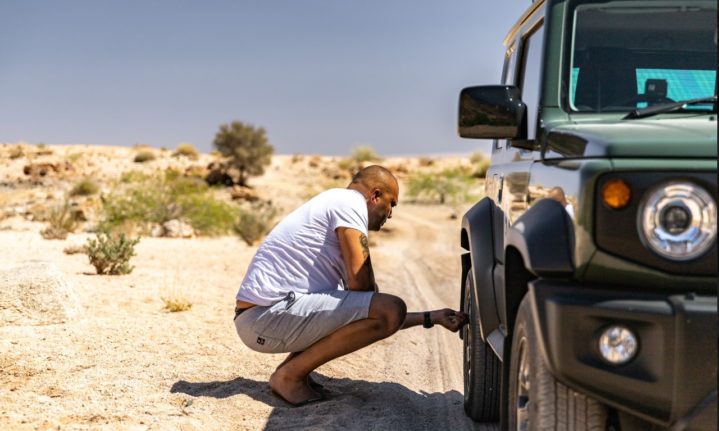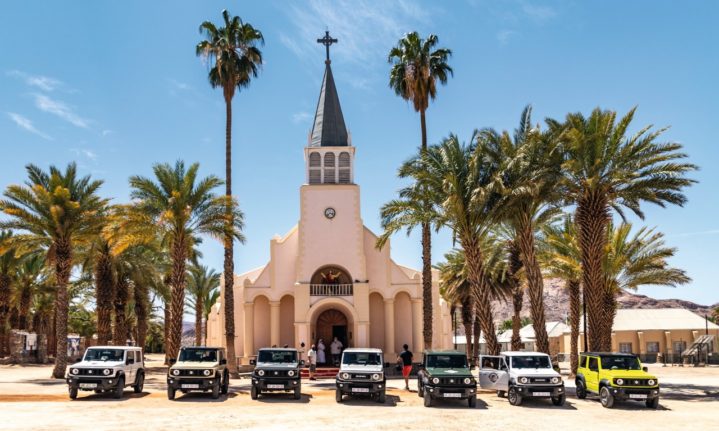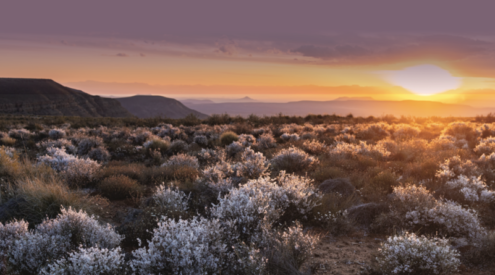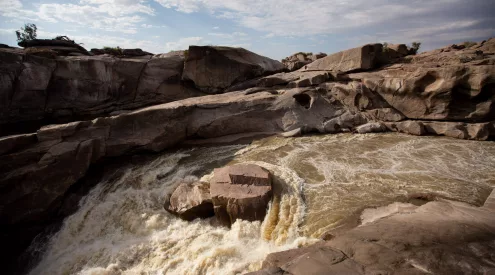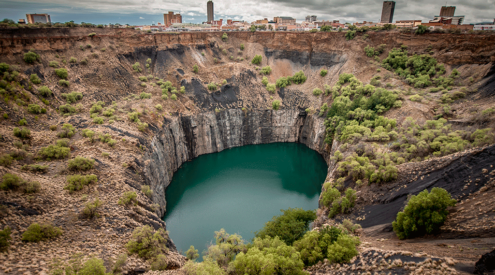What brings 11 people, seven cars and an endless supply of snacks together in the Northern Cape? A sense of adventure, a love for Jimnys and good road trip tunes.
‘I’m going up the country
Baby, don’t you wanna go?
I’m going up the country
Baby, don’t you wanna go?
We’re gonna go somewhere
Where we’ve never been before’
Canned Heat played through the speakers as the N14 stretched out ahead of our friendly convoy. Every second car honked their hooters or flashed their lights at us, for who can resist saying hello to six Suzuki Jimnys all cruising in a row? The best thing about driving a Jimny is the attention. The second best thing is the capability, and we intended to test just how capable these little beasts can be. Where better to put them through their paces than the varied terrain of the Northern Cape?
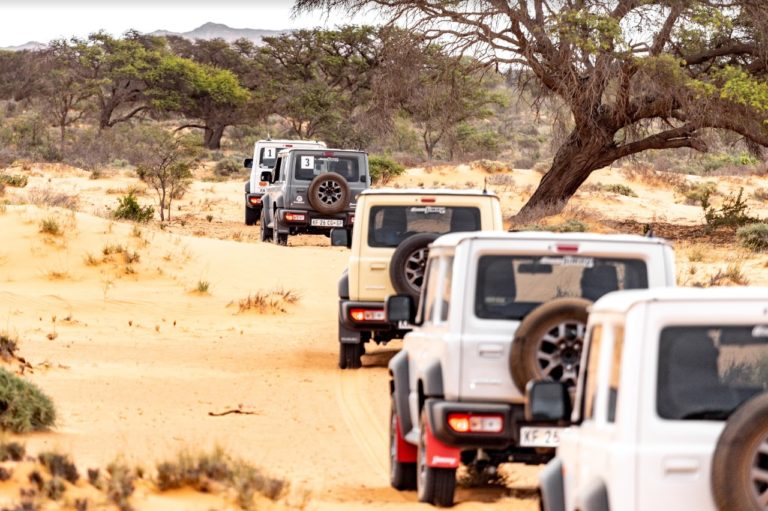
Photo: Chris Wall
The only brief we’d been given was to keep in mind the word “coddiwomple”; it means to travel purposefully in a vague direction. This trip would be less about destinations and more about the journey, and with that in mind, I turned up the volume as we headed – vaguely, of course – for Pofadder.
My roadtrip playlist is a little bit like the Jimny: it’s been around since the 1970s but it gets better with age, picking up some modern tunes and tricks along the way. The steering wheel audio control pleased me no end because I didn’t have to give up DJ duties to my boyfriend Jason. Since the LJ Series (first gen) came out in 1970, the Jimny has evolved a lot, but it has remained compact and full of character. We were driving a mix of manual and automatic fourth gen 1.5 GLX models, a slightly more robust vehicle than its three predecessors.
I thought of my little third gen Jimny sitting in my garage at home. I felt like I was having an affair with a younger, flashier, faster model. It felt wrong, this naughty weekend away in the Northern Cape, but as we picked up speed on the long and straight to Pofadder, it began to feel oh so right.
‘Is everyone okay with a burger and chips lunch?’ a message came through on our WhatsApp group. ‘No objections from the white Jimny!’ There were no objections from the green, silver, grey, or sandy-coloured Jimnys either. We’d landed in Upington at 8:15 in the morning, our motley journalist crew, our partners and a small team from Suzuki, but the sun was high in the sky now and we were hungry. We pulled into Pofadder 227km later, refuelled our cars, then refuelled our bellies next door at the Pofadder Inn. Here we met JJ du Toit, head of African Expeditions and the proud owner of a Jimny that had already clocked 30 000km in only three months under his ownership. He would lead our trip, giving us expert 4×4 advice and local travel intel via walkie talkies in each car.
From Pofadder we headed to Pella, a town I knew nothing about until I found myself sitting in its landmark church, the Cathedral of the Immaculate Conception. A sister from the church stood proudly in front of the pews, and told us the story of this oasis town and its sacred landmark. Pella had been visited by many missionaries in the 1800s, but heat and drought scared most away, until Father JM Simon arrived in 1882. Other priests joined him, but all were driven out by the harsh living conditions and intense heat, until in 1885, Brother Leo Wolf joined Father Simon. With zero building experience between them and nothing but a photograph for instruction, together they built the cathedral with bricks painstakingly made by hand at the Orange River. It took them seven years to complete. Simon and Wolf died in 1932 and 1947 respectively, and both brave priests of Pella are buried in their beloved church.

Immaculate Conception Cathedral, Pella. Photo: Chris Wall
From there, the coddiwompling really began. We let down our tyres and headed for Charlie’s (Charles’) Pass, a slightly challenging but beautiful 2.9km track through tricky terrain. It is certainly worth a visit but 4×4 capability is essential for the sharp stones and sandy stretches.
Next was Bobbejaanspieël, a steep and rocky climb that we went up just to see if we could. In 4L and with our tyres at 0.8 bar, we crawled up the incline with ease, and when we got to the top we turned around and came back down using downhill assist, which made the descent embarrassingly simple. A Jimny is wonderful for a novice or would-be 4x4er because it basically drives itself, particularly the automatic version I was driving.
I turned down Fleetwood Mac as JJ’s voice crackled over the radio: ‘I would love to know who the Japanese engineer responsible for this car is. I want to send him a piece of biltong.’
We stopped to dip our toes in the Orange River and waved hello to Namibia before our convoy coddiwompled through the riverbed, taking care to keep on one track through the sand. We rounded a bend and came across a real sight for sore eyes – a fully pre-erected camp courtesy of African Expeditions, including six tents with six neat chemical loos and showers, a stacked fire waiting to be lit and a fresh cooler box filled with Bushman Lager.

With everything dutifully set up by African Expeditions, all that was left to do was light a match and crack a beer. Photo: Chris Wall
We were only a few kilometres from the Namibian border, and we welcomed the remoteness of the place. A pink sky and the smell of steak on the braai ushered in the evening as we sat round the fire unpacking the day’s adventures. I was a travel writer among motor journalists so I was fined for choosing the automatic car (I actually chose it because it was white), for leaving the car running, and for taking a nap on a 4×4 track (as a passenger). The latter offence was testament to the comfort of the Jimny, although I had been up since 4am.
We did what all good 4x4ers do best – sat round the fire sipping beer and chatting, devoting equal time to the admiration of Jimnys and the bashing of Land Rover.
‘Well, it’s not a five-star hotel,’ JJ said as we reclined in our camp chairs and gave the sky our attention. ‘It’s more like a five-billion-star hotel.’
We were up early, the way it always is with camping, and JJ insisted we all start our day with coffee round the fire, made hot and strong by Piet Mokoena. Our breakfast destination was Karsten Boerdery, the biggest date producing farm in the southern hemisphere. I knew we were in the Northern Cape, but with the harsh desert landscape and towering date palms, we might have been in Saudi Arabia. Armed to the hilt with fresh date muffins baked in the farm kitchen, we pressed onwards to Springbok, but this was not a coddiwomple for we had a firm destination in mind: Wimpy.
Full of milkshakes and petrol, we hit the road towards Kleinsee via Spektakel Pass, so named by Simon van der Stel who came upon the region during the magnificent spectacle that is Namaqualand during its flower season.

Die Houthoop. Photo: Chris Wall
Finally we hit the dirt again and we stopped to let our tyres down. Whenever we stopped to do this, we caught snippets of each others’ roadtrip playlists, heavy metal blasting from the silver Jimny, rap blaring from the green and even a bit of country came through before the engine was quickly cut.

We took a detour on our way to our accommodation through “the little Kalahari” and pairs of Ludwig’s bustards rose from the veld as we wound through camel thorns in warm, red sand. We were heading for Die Houthoop, a working sheep farm about 10km outside Kleinsee.
Die Houthoop has all the best qualities of a farm-style guesthouse: a kitchen that permanently exudes warm, delicious smells, an owner full of stories, a comfy pub with an honesty bar and a resident border collie. The wind howled across the flat landscape, and we gathered haphazardly on chairs and barstools around the bar under an impressive collection of caps. After a hearty meal of ham and pea soup with fresh white bread and a glass of red wine or two, it was time for a hot shower and a warm bed.

Challenging terrain on the west coast. Photo: Chris Wall
By 8am we were heading for the coast where we would get to spend some serious time in coastal sand, on a two track through the dunes riddled with hidden rocks.
This part of the Skeleton Coast between Koingnaas and Kleinsee used to belong to De Beers, but is now under the ownership of West Coast Resources. The mine manager has given JJ permission to traverse this stretch, a privilege he takes very seriously. He underlined the seriousness of the matter to us, too. The road can only be driven one way, he said, and off-roading was a strict no-no. For JJ, it’s clear that, while 4x4ing is certainly about getting to places where regular cars can’t, it’s not always about taking the road less travelled. Good 4×4 etiquette means sometimes having to take the heavily beaten track in order to consciously avoid disturbing the wild, unspoiled environments that our 4x4s take us to.
We put the Jimnys in 4L, which is gentler on the terrain and makes dune climbing easier. Our biggest advantage, and one the Jimny holds over most overlanding vehicles, is weight, or lack thereof. Despite stretches of really thick sand, we floated over even the trickiest of sections, guided by JJ on the radio the whole way through. I got so used to driving in the safety of a convoy I wondered how I would ever drive solo again.
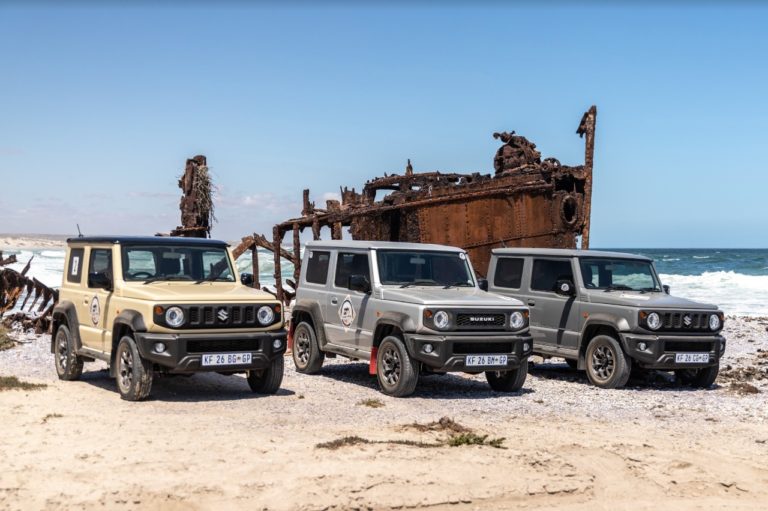
Jimnys showboating in front of The Border, an unfortunate vessel that ran aground in 1947 after losing its rudder in a rough storm. Photo: Chris Wall
This part of the coast is home to three shipwrecks, of which the most interesting is the Piratiny, a Brazilian steamer that ran aground in 1943. It’s not called the Shipwreck Coast for nothing, but one particular rumour suggests the steamer was hit by a German U-boat, although none of the passengers, all of whom survived, ever confirmed this information. Cargo from the ship washed up along the coast and locals helped themselves to all the clothes and textiles. Nagmaal the following Sunday was apparently a rather spiffy affair.
In a final test, we spent an evening sending the Jimnys between two enormous dunes on Die Houthoop, criss-crossing through the farm’s sandy terrain trying to find more challenging climbs and descents with each run. It was no surprise to any of us that they handled whatever we threw at them with laughable ease.
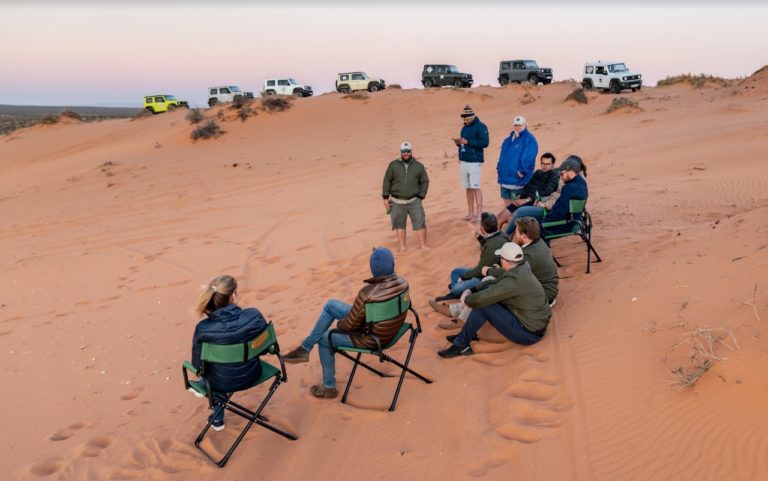
Travel writers position themselves to watch a sunset; motor journalists position themselves to watch the reflection of a sunset in the car windows. Photo: Chris Wall
box> What’s in a name?
Jimny is an amalgamation of “jeep” and “mini” (say that five times fast), named when Jeep was still commonly used as a generic term for small 4×4 vehicles.
Suzuki Jimny 1.5 GLX AllGrip
Price: R351 900
Engine 1.5-litre 77kW/138Nm petrol
Power: 75 kW
Torque 130 Nm
Fuel consumption: 6.3 L/100km (claimed)
Top speed: n/a
Suzuki South Africa has expanded the Jimny line-up with two GL models, manual and automatic, that will slot between the entry-level Jimny GA and top-of-the-range Jimny GLX. The entire range is fitted with Suzuki’s AllGrip 4×4 system and powered by the same 1.5-litre 77kW/138Nm petrol engine.
box> Do This
African Expeditions offers this Suzuki Safari, starting at R8 950pp sharing for six nights, including meals and accommodation. It also offers Jimny trips to other parts of Namaqualand and special trips to Botswana. Jimny hire for R950/day.
africanexpeditions.co.za
084 874 7388
Stay here
Die Houthoop
The rustic farm-style setting of Die Houthoop is ideal for visitors to Namaqualand looking to experience true Namaqualand hospitality.
From R350 pp pn
houthoop.co.za
078 598 7227

